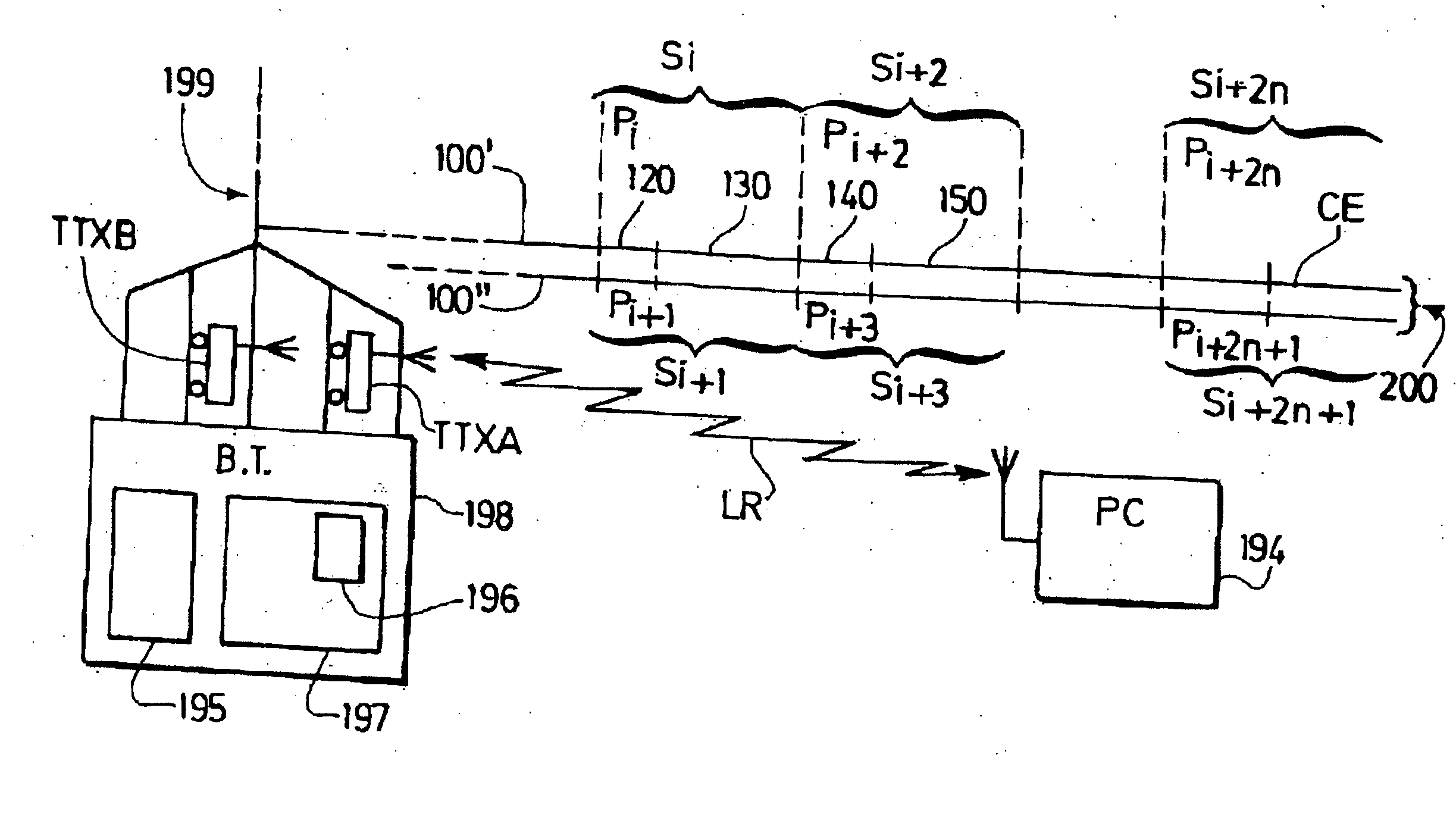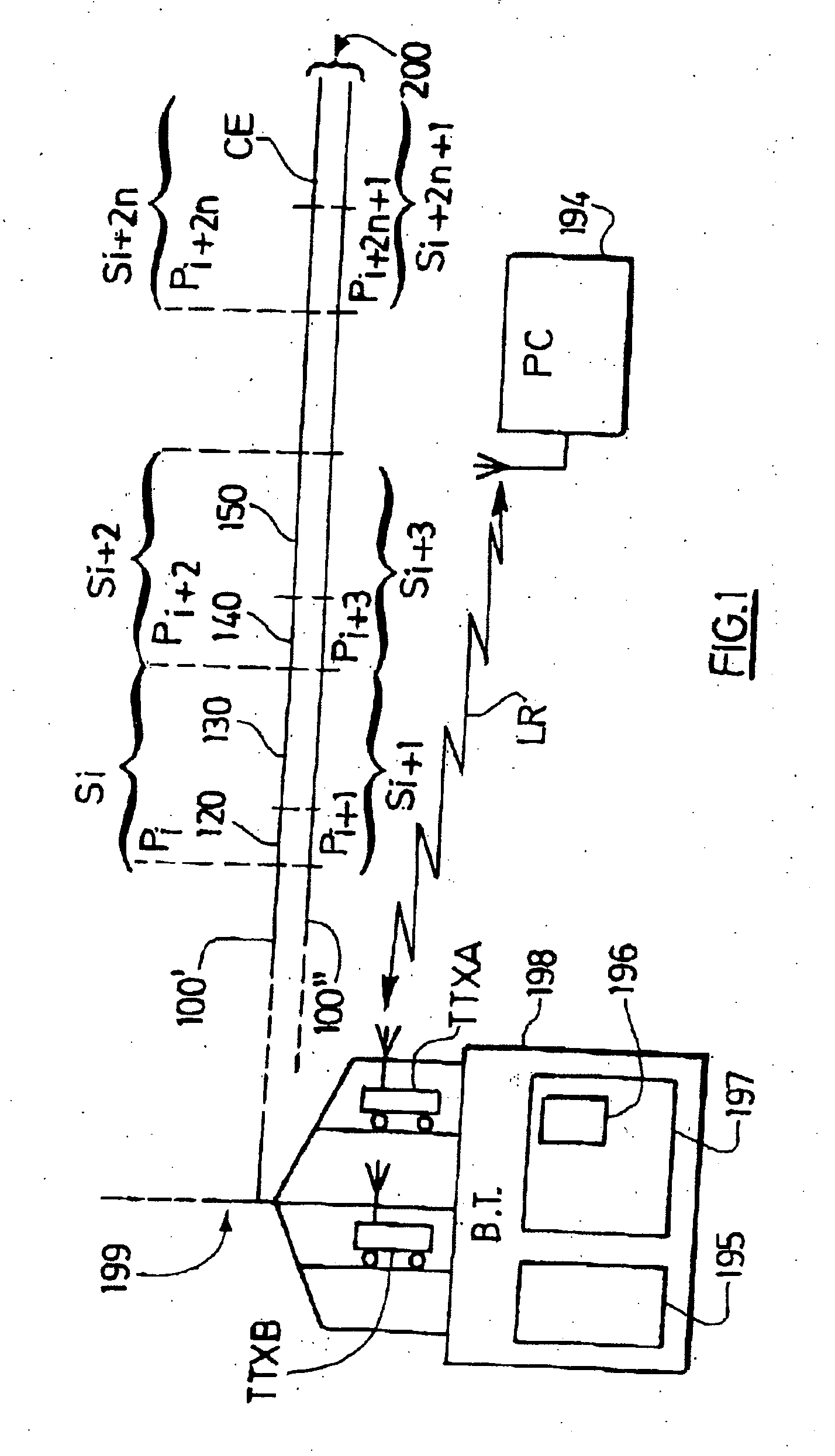Method and system of aiding the movement of works trains
a technology of work trains and aiding movements, applied in the field of aiding the movement of work trains, can solve the problems of significant staffing, prohibitive cost, and limit the speed of work trains on the tracks, and achieve the effect of gaining precious tim
- Summary
- Abstract
- Description
- Claims
- Application Information
AI Technical Summary
Benefits of technology
Problems solved by technology
Method used
Image
Examples
Embodiment Construction
[0051] With reference to FIG. 1, the tracks 100′ and 100″ of the line 200 of a railway under construction connect at least one elementary work-site CE to its work base BT.
[0052] The work base BT is arranged so as to allow the constitution and distribution of work trains TTX A, B, etc on the line 200 with the elementary work-site CE as their destination.
[0053] Thus, a train leaving a set of formation sidings 196 of a marshalling zone 197 of a work base 198 travels via a track junction block 199 before moving on the line, an agent of the points-marshalling block 195, after agreement by the PC chief 194, controlling the predicted itinerary over the track junction block 199.
[0054] The lines are arranged as described below:
[0055] A line 200 is divided into successive adjacent sectors Si, Si+2, etc. on the track 100′ and Si+1, Si+3, etc. on the adjacent track 100″. Blocks Pi, Pi+2, etc and Pi+1, Pi+3, etc. respectively delimit these sectors on these tracks.
[0056] The blocks Pi, Pi+2,...
PUM
 Login to View More
Login to View More Abstract
Description
Claims
Application Information
 Login to View More
Login to View More - R&D
- Intellectual Property
- Life Sciences
- Materials
- Tech Scout
- Unparalleled Data Quality
- Higher Quality Content
- 60% Fewer Hallucinations
Browse by: Latest US Patents, China's latest patents, Technical Efficacy Thesaurus, Application Domain, Technology Topic, Popular Technical Reports.
© 2025 PatSnap. All rights reserved.Legal|Privacy policy|Modern Slavery Act Transparency Statement|Sitemap|About US| Contact US: help@patsnap.com



